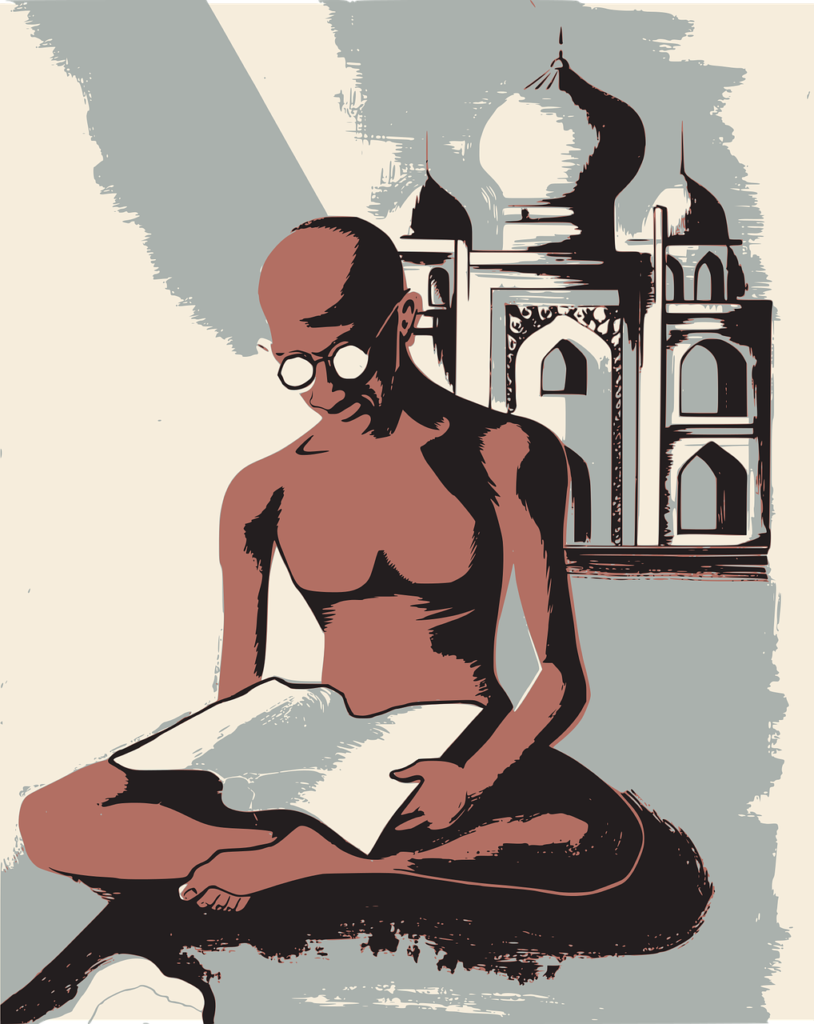Yoga – History and Context

What do you know about yoga and how do you know it? This is actually a really good question, and Susanna Barkataki asks us this in Part I of Chapter III of Embrace Yoga’s Roots. I think another great question is what do you even want to know about yoga and how do you choose your sources?
As with anything, a little history and context go a long way to help us understand a subject. Susanna reminds us that yoga’s roots are very likely beyond the time of Patanjali’s codification in The Yoga Sutras, anywhere between 2,500 to 10,000 years old depending on your sources. Varying lineages, styles, and schools of yoga have always existed, but the common definition and teaching has always revolved around the “unity of just being” (pg 37). This takes us much beyond the physical activity and surface practices of breathing that are the expectations of any modern Western Yoga class.
“What is undisputed is that yogic practices sprung up in an Indic culture that respected and learned from nature and deeply valued spiritual exploration”
Embrace Yoga’s Roots – pg 36
So what or who do we do yoga for?
“Though it has often been reduced to little more than just carrying around a yoga mat and rolling it out to do a class where you move your body into different shapes, it (yoga) is so much more. Yoga is a complex and comprehensive system of specific practices of body, mind, and spirit that guide the individual and society toward liberation and freedom from suffering”
Embrace Yoga’s Roots – pg 38
There are many who envision a yogi as someone sitting quietly in a cave completely unconcerned with the “reality” of life and all its disturbances and distractions, but in her excerpt of yogi history from India, Susanna Barkataki makes it clear that this has not been historically the case. As the British sought to colonize the Indian continent and subdue its people and culture, there were yogis who initially banded together to fight this oppression and rule. Eventually of course, Gandhi, an ascetic and yogi used foundational texts of yoga to create his movement that ultimately helped bring down British rule of India.
Yoga is not just for individual freedom, but can “bring us liberation from every construct, including those of race, gender, time, space, location, identity, and even history itself.” (pg 41) We just have to be willing to apply all the practices fully, with intention, and acknowledgment of yoga’s roots.
The last part of this Part I is for me the start of the deeper work of this book – “How do we know what we know about yoga?” The subject of yoga is an interesting balance between the need for an external teacher and gaining knowledge of our internal awareness. We need a teacher who can guide and instruct us along the outer physical realms of the yoga practice, but ultimately yoga is informed and explored through our individual and very unique internal experience. Gaining wisdom and faith in our discrimination between the two is one of the more interesting aspects of yoga practice. Geeta Iyengar was a demanding and keen teacher – in a class with her, there was no escape from doing what she asked of you. At the same time, one her most common refrains was “YOU find out”. It is a balance. To ONLY give in to external instruction without also holding the self-reflective piece, we lose our sense of Self. But to ONLY give in to what you “want” or what is “easy” at the time, disregarding any teacher direction, also goes against the very definition of yoga – which is that we are mostly distracted away from our True Self from the whims and fancies of our external attachments.
Lastly, Susanna Barkataki addresses the “consumer culture” that has also taken over yoga. Today, we find “yoga practice is co-opted, de-cultured, packaged, branded and currently in service of global capitalism.” (pg 43) Economic interests and egos drive our need to have competition and comparison, an attitude of scarcity instead of abundance within our yoga communities. Where does that leave the feelings of “liberation” and “freedom” promised by the practice of yoga? And how does this approach include or exclude certain people from practice or keep it from being fully and truthfully shared from its roots?
Next Reading – Chapter III, Parts 2 and 3